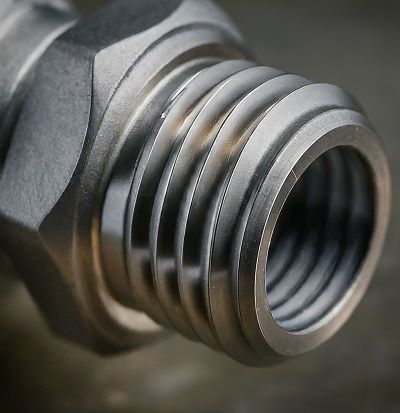In the world of hydraulic systems, leak-proof connections are paramount. Even the smallest drip can lead to performance issues, downtime, and safety hazards.
That’s where ORB (O-Ring Boss) fittings come in. They’re a popular and reliable choice for hydraulic applications thanks to their secure O-ring seal. But to ensure a flawless connection, understanding ORB fitting compatibility is crucial.
ORB Thread Standards
Imagine trying to assemble furniture with mismatched screws. That’s the importance of thread standards in hydraulic fittings. They ensure components fit together seamlessly and create a leak-proof seal. There are two primary international standards for ORB fittings:
➡️ SAE J1926: This standard, established by the Society of Automotive Engineers, specifies the dimensions, performance requirements, and material specifications for ORB fittings used in North America. It defines factors like thread size, port configuration, and pressure ratings.
➡️ ISO 11926: This International Organization for Standardization document outlines the specifications for straight-thread O-ring boss fittings used globally. It closely aligns with SAE J1926 but may have slight variations in dimensions for specific fitting sizes.
By following these standards, manufacturers ensure ORB fittings from different brands fit together. They also ensure the fittings make secure connections in a hydraulic system.
Compatibility with Other Fitting Types
ORB fittings offer a reliable seal. But, they don’t fit all other common fitting types. Here’s why:
➡️ BSPP (British Standard Pipe Parallel): Both ORB and BSPP utilize parallel threads. However, BSPP relies on a bonded seal created by pipe thread compound, whereas ORB employs a dedicated O-ring for sealing. Direct interchangeability is not recommended due to these differing seal mechanisms.
➡️ JIC (Joint Industry Council): JIC fittings rely on a metal-to-metal seal for high-pressure applications. Their threads and sealing approach differ significantly from ORB fittings. Adapters exist to connect ORB and JIC components. But, it’s not a best practice for all situations. They can cause mismatch and hurt performance.
Choosing Compatible ORB Fittings
Selecting the right ORB fittings requires careful consideration of several factors:
➡️ Thread Size and Standard: Identify the thread size (e.g., -6, -8) and ensure it adheres to either SAE J1926 or ISO 11926. Mismatched sizes will lead to leaks and connection failure.
➡️ Fitting Type: ORB fittings come in various configurations like male elbows, female connectors, and plugs. Choose the type that aligns with your application and ensures proper connection flow.
➡️ Pressure and Temperature Ratings: ORB fittings have designated pressure and temperature limitations. Choose fittings that meet or exceed your hydraulic system’s pressure and temperature. This will keep you safe and prevent part failure.
Additional Tips and Considerations
For optimal performance and leak-free connections, consider these additional tips:
➡️ High-Quality O-Rings: Utilize high-quality O-rings specifically designed for ORB fittings. Improper material or worn O-rings can compromise the seal and lead to leaks.
➡️ Proper Installation: Follow the manufacturer’s recommended installation procedures for ORB fittings, particularly regarding torque specifications. Over or under-tightening can damage the O-ring or fitting threads.
➡️ Consult a Professional: For complex hydraulic systems or applications with specific pressure requirements, consulting a qualified hydraulics professional is highly recommended. They can guide you on selecting the most compatible and suitable ORB fittings for your needs.
Conclusion
Understanding ORB fitting compatibility is vital for building safe and reliable hydraulic systems. By following the outlined factors and using high-quality parts, you can be sure of leak-proof connections. This will lead to the best performance in your hydraulic applications.
Post time: Jun-19-2024


